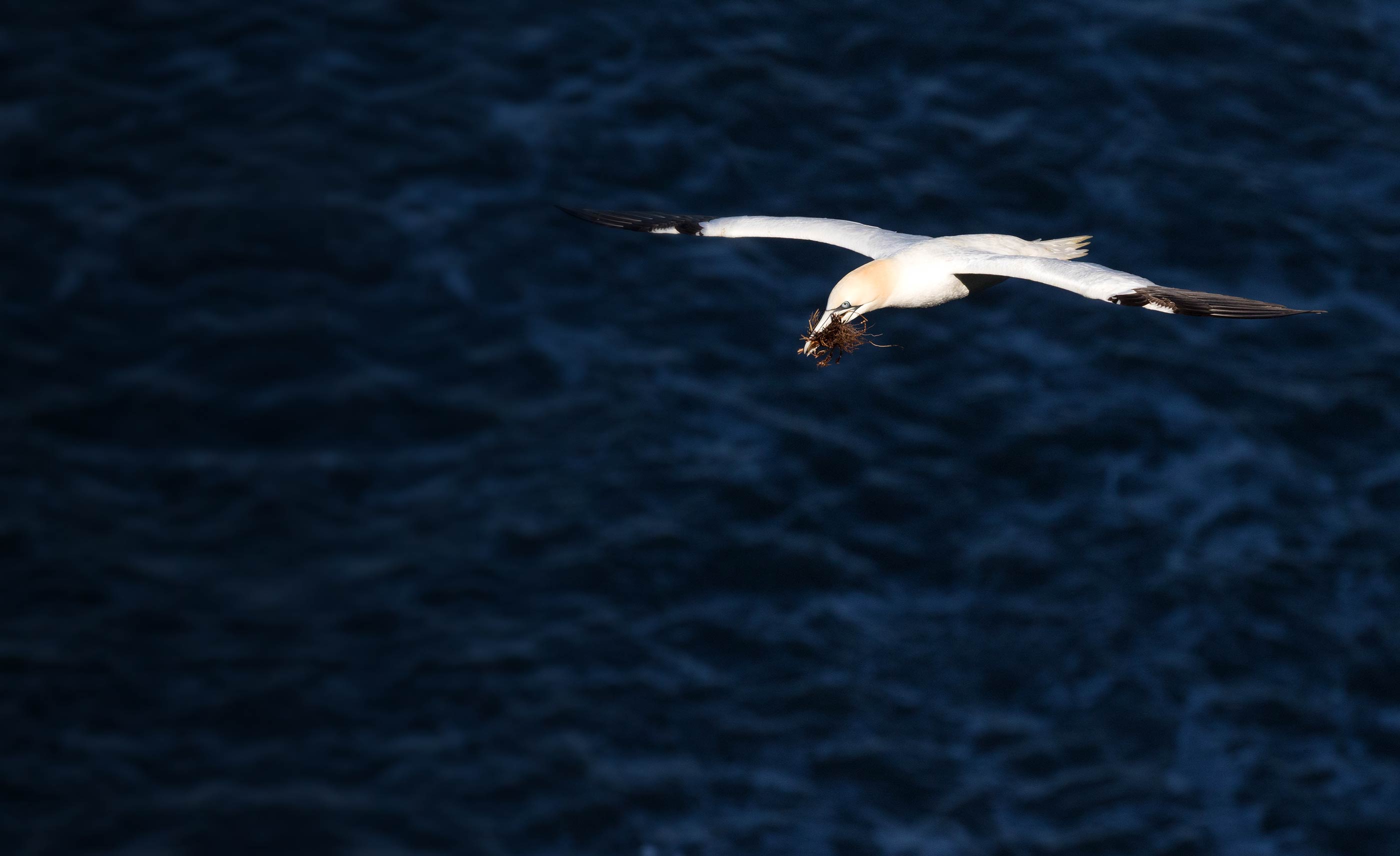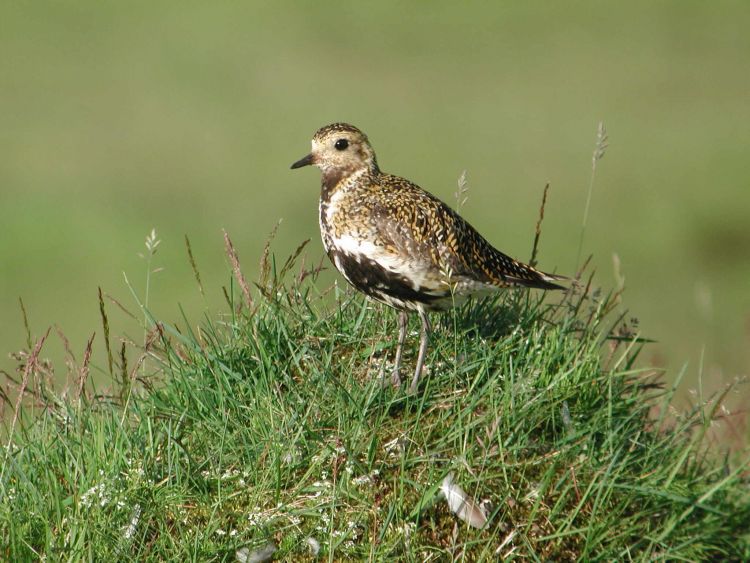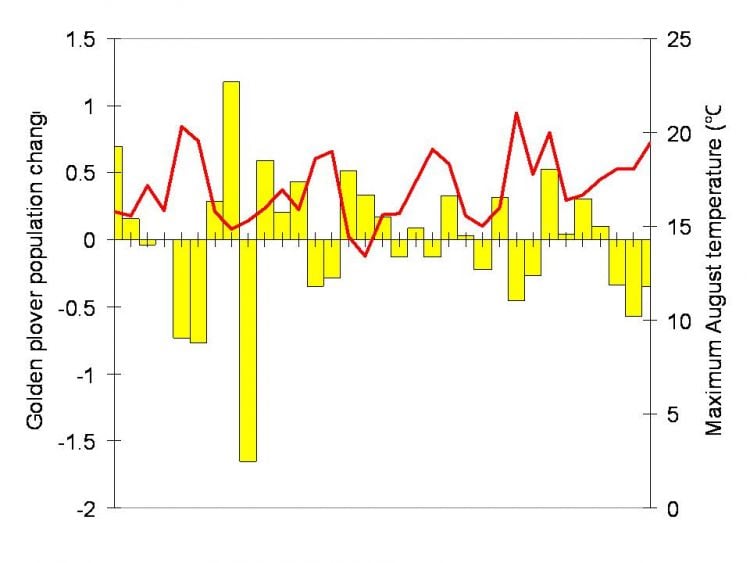Do plovers face a golden future?
Golden plovers are at the southern edge of their global range within the UK, where they breed on upland heaths and bogs. Given likely polewards shifts in the distribution of species, they are likely to be particularly vulnerable to climate change.
One of the ways in which they may be vulnerable is through effects on their main prey of craneflies. These emerge as adult insects from the surface layers of the peat in May and June to provide a super-abundance food source for birds, such as golden plovers, that breed on our peatlands. Their importance is underlined by the fact that golden plover chicks survive better in years when there are lots of craneflies (Pearce-Higgins & Yalden 2004). However, high summer temperatures which dry out the surface layers of the peat, kill young cranefly larvae, and result in few adult craneflies emerging the following year, which means that few chicks survive to fledge, and the golden plover population is likely to decline by the next again year. As a result, there is a negative correlation between August temperature and golden plover population change, with a two-year lag (Pearce-Higgins et al. 2010).
change (yellow bar) as a function of mean maximum daily
August temperature with a two-year lag (red line).
Bars above the line represent population increase and below
the line, a population decline.
Developing this understanding has meant that it is possible to consider different management solutions to climate change (termed climate change adaptation). The density of craneflies varies between different habitats in relation to moisture availability, which means that if it is possible to manage water levels on peatlands, then it may be possible to reduce the negative effects of climate change (Pearce-Higgins 2011). One way to do this is to block the many drains and ditches (grips) which were constructed across the UK uplands to reduce water levels in an attempt to improve agricultural productivity. This is already being done by a number of conservation organisations to improve habitat condition, but as shown by recent experimental work, also leads to significant increase in craneflies (Carroll et al. 2011). This therefore provides one of the first examples of how specific management practices may increase the resilience of a vulnerable system to climate change. Importantly, blocking drainage ditches is not only beneficial for conservation now, but is likely to become increasingly beneficial in the future, and not just for golden plovers, but for the wide range of peatland bird species which feed on craneflies (Pearce-Higgins 2010).
References
Carroll, M.J., Dennis, P., Pearce-Higgins, J.W. & Thomas, C.D. 2011. Maintaining northern peatland ecosystems in a changing climate: effects of soil moisture, drainage and drain blocking on craneflies. Global Change Biology 17: 2991-3001.
Pearce-Higgins, J.W. 2010. Using diet to assess the sensitivity of northern and upland birds to climate change. Climate Research 45: 119–130.
Pearce-Higgins, J.W. 2011. Modelling conservation management options for a southern range-margin population of Golden Plover Pluvialis apricaria vulnerable to climate change. Ibis 153: 345-356.
Pearce-Higgins, J.W., Dennis, P., Whittingham, M.J. & Yalden, D.W. 2010. Impacts of climate on prey abundance account for fluctuations in a population of a northern wader at the southern edge of its range. Global Change Biology 16: 12-23.
Pearce-Higgins, J.W. & Yalden, D.W. 2004. Habitat selection, diet, arthropod availability and growth of a moorland wader: the ecology of European Golden Plover Pluvialis apricaria chicks. Ibis 146: 335-346








Share this page